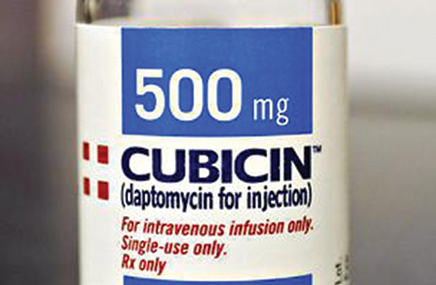As a top-selling Johnson & Johnson brand, injectable Risperdal Consta, came under nationwide recall for contamination, the fallen icon of pharmaceutical quality took steps to solidify its position amid a rising tide of drug makers making similar quality-related recalls.
According to a Stericycle ExpertRecall report, drug and pharmaceutical recalls reported by FDA in the second quarter of this year surged 127% over the previous quarter. Stericycle specializes in providing recall management services to drug and medical device companies.
The new J&J recall involved Alternaria alternata mold, found in one lot. The company said the bacterium could cause low-risk infections around injection sites.
Barely a week before this recall, another J&J unit (McNeil) recalled about 200,000 bottles (three lots) of concentrated Motrin Infants’ Drops Original Berry Flavor 0.5 fluid ounce bottles after plastic particles were found in tested samples.
In both cases, the affected products were manufactured for J&J subsidiaries by subcontracted outside manufacturers.
Manufacturing troubles have plagued J&J for several years. In 2011, its McNeil unit and FDA entered into a consent decree of permanent injunction over good manufacturing practice (GMP) issues that had led to numerous recalls of over-the-counter products, including children’s Tylenol, Motrin, Zyrtec, and Benadryl.
Under terms of the agreement, McNeil was barred from manufacturing and distributing drugs from its Fort Washington, PA, facility until FDA verified that its operations were in GMP compliance. The company was also required to adhere to a strict timetable to bring its facilities in Las Piedras, Puerto Rico, and Lancaster, PA, into compliance.
J&J is the best known of the current crop of companies recalling products for quality reasons, but the problems at issue for all seem to have commonalities.
In September, Aquebogue, NY-based Altaire Pharmaceuticals recalled nine lots of carboxymethylcellulose sodium 0.5% ophthalmic solution, 30 mL, due to mold complaints. Mold was detected in bottles after use, according to the company, which raises “concerns regarding the effectiveness of the preservative after use and handling of the product by consumers.”
Altaire said it had confirmed that all lots were sterile at the time of release, and that the preservative was effective when challenged against the USP Preservative Effectiveness Test. It also confirmed that the production facility had not been the source of any reported contaminants, the company said.
Also in September, Cubist Pharmaceuticals of Lexington, MA, recalled four lots of Cubicin (daptomycin for injection) due to glass particulate matter found in a number of vials from those lots. The company said no adverse events associated with the recalled products had been reported to date.
What could be causing the upsurge in drug recalls? FDA says it is analyzing its reports on them, but at our press time, the analysis had not been completed.
Observers of FDA recall and manufacturing quality inspections, however, note a combination of factors, including increased use of outside contract manufacturers by major brand pharmaceutical companies.
These smaller companies, especially those outside the US, may not be inspected by FDA as frequently as the major firms. Another factor could be deficient employee training in some of the source manufacturers. Yet another could be contamination of ingredients that are increasingly imported by US manufacturers from overseas suppliers.
FDA’s records do not show the upsurge reported by Stericycle ExpertRecall, but that may be due to the agency’s use of fiscal year (October 1 through September 30) data to analyze quarter-to-quarter reporting totals.
Stericycle reported that in addition to the 127% increase in the number of recalls, units of drug product recalls rose about 32% in the second quarter. In addition to drugs and pharmaceuticals, Stericycle said there were 411 medical device recalls in the second quarter of 2013, up 30% from the previous quarter.
There were 9.2 million device units affected by recalls in the second quarter, “a dramatic decrease of over 50% from the previous quarter, resulting in the lowest level of units affected in six quarters,” the report said.
Device recalls were begun by 174 companies in the second quarter, the report said. Of these, 38% issued more than one recall, “a trend that continues from the previous four quarters,” it added. One company announced 17 recalls, and six companies announced 10 or more recalls each. Overall, 80% of recalls were classified as Class 2.
From the October 01, 2013 Issue of MM+M - Medical Marketing and Media








